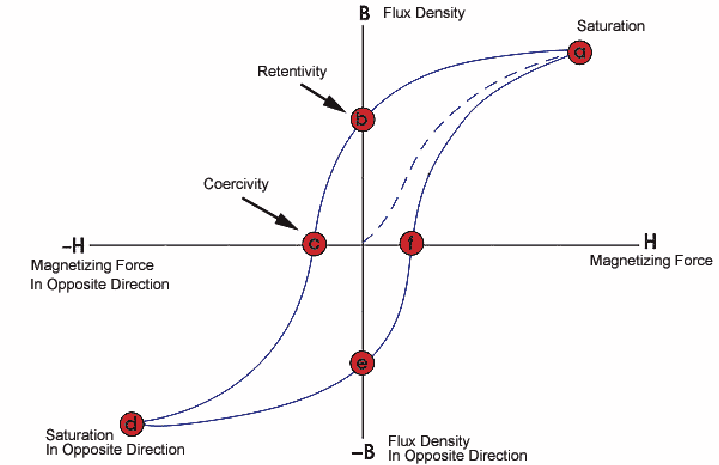When a magnetic material is repeatedly magnetised and demagnetised it heats up. The heating arises because the magetic field which align themselves to magnetise the material are produced by the electrons as they orbit the atom, so repeatedly aligning and realigning the magnetic fields gives energy to the electrons and so heats the material.
The diagram below show the relationship between the magnetising force and the extent to which the material becomes magnetised.

There are several points to note.
-
As the magnetising force H increases, the field inside B the material reaches a maximum. This is called saturation.
-
When the magnetizing force is removed there is a residal magnetic field, called the retentivity.
-
To unmagnetize the material it is not enough to remove the magnetic field. The coercivity is the opposing magnetising force that must be applied to unmagnetise the material.
-
The area enclosed by the hysteresis loop is a measured of the heat produced during a complete hysteresis cycle. In fact the heat produced per unit volume is

-
Soft magnetic materials – iron - require less magnetize force to produce the same magnetic field. Hysteresis losses tend to be smaller for soft magnetic materials. These are used in transformer cores, where it is desirable to repeatedly magnetise and unmagnetise the core with minimum energy losses.
